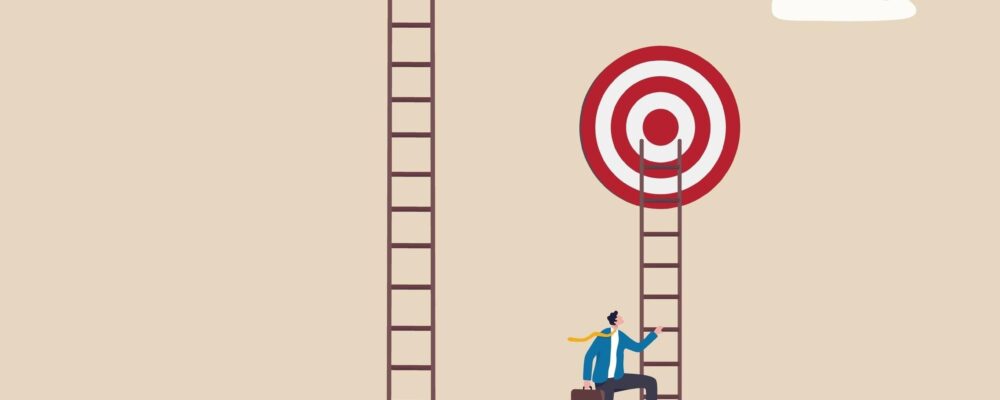It is broadly understood that bold, expansive postures and gestures convey power and credibility. But how often have executives entered a meeting confident in achieving their goal, only to leave blindsided – unsure of how the power dynamics shifted in favour of an opposing viewpoint?
Most people assume that their actions are their own. However, our research would argue that it is the (often unconscious) responses to the behaviour of others that determine who dominates in any interaction. This builds on findings highlighted in an earlier study by Curtis LeBaron (a co-author of this piece), which examined real-life video recordings of United States police detectives interrogating murder suspect “Dave”.
The research showed how seemingly minor physical actions by the detectives and their strategic use of the space and surrounding objects – including furniture, a light switch and a door – shifted the power dynamics. Dave, oblivious to the strategic interactions around him, fell from a position of parity to a passive player in the detectives’ game.
Using power moves in a corporate setting
These same tactics can be used in the boardroom. Countless studies show that power dynamics are inherent in organisations. Interactions within institutions, such as those between politicians in a parliamentary arena or a meeting room full of directors, regularly involve imbalances of power. This was noted by sociologists Paul Drew and John Heritage in their introduction to the book Talk at Work.
Intrigued by such power plays, we studied video recordings of the non-verbal communication that occurred during meetings of top management teams across Europe and North America over a 20-year period. This analysis was further supported by observing the behaviour of executives and MBA students during classroom simulations.
We discovered that successful outcomes do not follow a linear process. Instead, they are the result of a dynamic interplay of moves and countermoves as individuals respond consciously or subconsciously to the actions of others. This is what sociologist Erving Goffman describes as “interaction order”.
We do not gain more influence and arrive at successful outcomes simply by engaging in more assertive behaviour. Rather, the body language we choose to display needs to be dynamic and adaptable based on the reactions of our counterparts. Sometimes we engage in these behaviours unconsciously, but there are times when we can gain conscious control and use them strategically.
Whether a particular move is “good” or powerful also depends on the prior or subsequent moves of others. Like a game of chess, taking and keeping the advantage necessitates more than a single power move. It requires a series of strategic steps to defend, consolidate or counter a viewpoint, until one side emerges victorious.
Drawing from years of research and observations, we’ve identified four actions that can help executives take and maintain the lead in any situation. While some of these suggestions may appear obvious, many individuals don’t regularly put them into practice, or can even forget them in the heat of the moment.
1. Read the room
Identify the dynamics at play before entering a room. Anticipate your peers’ physical movements and consider your response. For instance, note who people are sitting next to. Are they allies? Is this a regular pattern? Recognise the unwritten rules that may exist and could lead to unexpected outcomes. As an example, leaning back in a chair is often seen as a sign of confidence. However, in some workplaces, particularly those with hierarchical cultures, it can suggest a lack of respect.
Remember that the environment and dynamics in a meeting room are constantly changing. It’s therefore important to continue to read the room and pay attention to the behaviour of both senior and junior members. Senior members may sway decisions because others simply comply, but junior members can reveal important information through their body language.
One could look out for facial expressions that indicate agreement – usually marked by a genuine smile, also known as a Duchenne smile (i.e. smiling with both the eyes and the mouth) – or those that indicate disagreement like facial expressions of contempt (e.g. a lopsided curl of the lips or a sideways glance of the eyes). If the decision-making criteria involves a vote, you need to influence both groups.
Plan to be challenged and be ready to adjust your behaviour accordingly. If you find yourself taken by surprise or placed in a position of disadvantage by an opposing action, get up and move about. Circling the room, getting up to present and then sitting next to an ally to deliver a final message can capture attention and underline the strength of a coalition.
2. Gain attention
Where you sit in a meeting matters. For a high-ranking member of the group, sitting at the end of the table is particularly effective when issuing a directive. But when seeking buy-in from others, it can be more advantageous to sit in the middle surrounded by allies or superiors, which can present a show of strength and foster support.
Sitting next to your allies is a display of strength, while a higher-level political move would be to distribute your allies throughout the room to divide and conquer. Sitting near superiors allows you to be physically closer to them which, if coupled with the right strategy, can make you seem psychologically closer in their mind. This is akin to salespeople getting physically closer to potential customers in a non-intimidating way when trying to pitch to them, or waiters giving customers a warm smile when presenting the bill to create a sense of closeness and encourage a more generous tip.
Orientation – how you position your body to relate to others – and gestures are also important. During our studies, we watched as Andrew, the CEO at a global facilities management company, and John, a regional managing director, engaged in a verbal tussle about restructuring their organisation. At a previous meeting, it had been decided that the company would adopt a more centralised structure. But John wanted the discussion reopened to explore other options.
John leaned back in his chair and started talking and gesturing, making himself the object of the group’s attention. By leaning back, he also increased his distance from the CEO and other members of the group to accentuate his differing viewpoint. His posture sharply contrasted with others, positioning himself in opposition to Andrew (an effect that can also be achieved by sitting opposite the individual in charge). Conversely, leaning forward suggests an attitude of curiosity, while sitting upright and leaning forward when speaking enables individuals to gain influence even when delegated to a “lesser” place at the table.
When two people look at each other in mutual orientation – say, both leaning forward – they create what Goffman calls an “ecological huddle”. An example of this would be two colleagues working on a strategy pitch together. This can exclude individuals who don’t agree with them, or at least make it difficult for others to enter the conversation. On the other hand, maintaining eye contact and constant reorientation towards everyone around the table can help in gaining group consensus.
3. Pick your moment
Timing is important when making your move. In another video, we observed Tim, the sales and marketing director of a top-tier service company, make an impassioned pitch to the firm’s executives outlining his plan for centralising the company’s marketing structure. He had everybody’s attention and was holding sway when Philippa, a regional managing director, suddenly changed the dynamic of the meeting.
Turning away from Tim, she paused, looked at the other regional directors, opened her hands in a gesture of exasperation and simply said, “This will never work.” Tim was immediately silenced, and his narrative was lost.
4. Use objects
Relying solely on gestures isn’t enough to have an enduring impact in challenging meetings. To influence boardroom dynamics, consider making use of the objects around you. The whiteboard, be it physical or virtual, can be a powerful tool to maintain attention when trying to persuade. For example, studies of video analysis show the power of the laser pointer to guide the audience’s attention and support a narrative.
Glassware, notepads, laptops, pens and even clothing can all be harnessed to direct attention or form metaphors to underscore a point. Wearing a tie but no jacket, for example, can signal a formal leadership role while suggesting “idiosyncrasy credits” – the right to deviate from norms and expectations because of the individual’s authority.
Effective use of objects can be surprisingly tricky. Grabbing something at random or fiddling with an object can give the impression that you’re nervous or grasping for ideas or control. The most successful use of objects should look planned and steady, like slowly pouring a glass of water or holding on to a pen, pointer or whiteboard marker without jiggling it.
While the data we collected was of senior-level interactions, our findings are also relevant to management teams in general. You do not need to be in a position of authority to gain power. However, human interactions are complex and dynamic.
The key to navigating power dynamics in any meeting is to remain constantly aware of your environment – the unique context in which you are operating in. Keeping this in mind, you can then proceed to deliberately and strategically alter your moves – orientation, position and use of objects – in a way that increases your influence.
“INSEAD, a contraction of “Institut Européen d’Administration des Affaires” is a non-profit graduate-only business school that maintains campuses in Europe, Asia, the Middle East, and North America.”
Please visit the firm link to site






